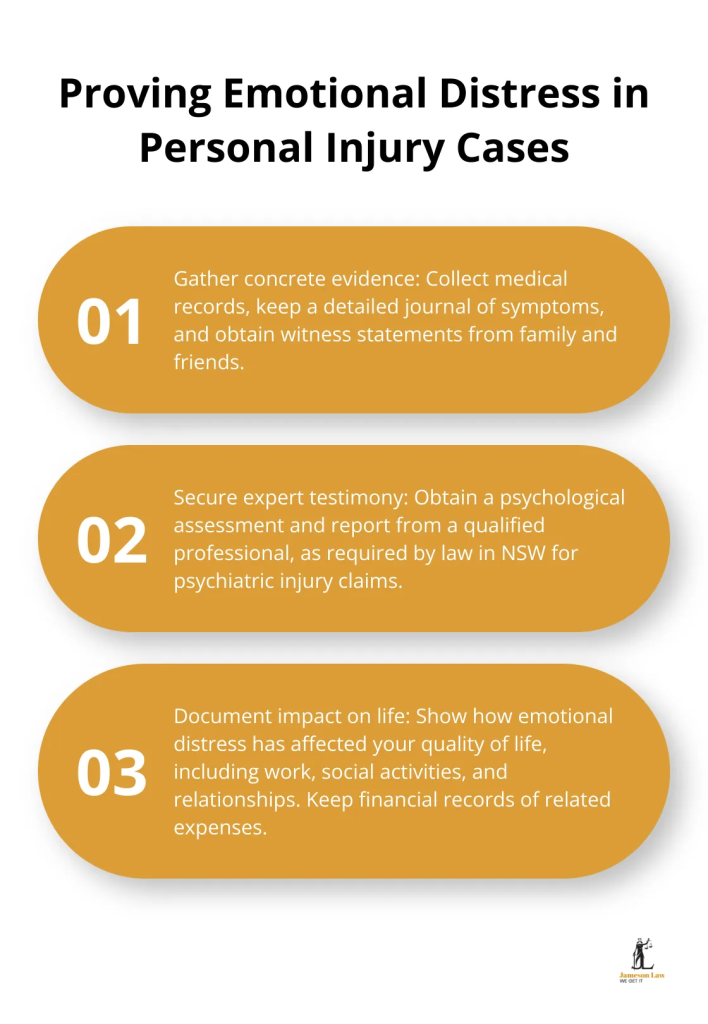
You face a personal injury that changes your life. Proving emotional distress in such cases is crucial for fair compensation. You may wonder how to gather the right evidence and present a strong claim. A South Bend personal injury lawyer can guide you through this process. Emotional distress claims often involve complex steps. You must demonstrate how the injury impacts your mental well-being. Medical records, therapy notes, and even personal diaries can provide clear proof. You need to show how your experiences lead to anxiety, depression, or sleep loss. The courts want concrete evidence, not just emotional stories. A well-documented case increases your chances of success. Working with legal experts ensures you have the support and skills needed. Together, you can build a compelling case that effectively communicates your suffering and secures the justice you deserve.
Understanding Emotional Distress Claims
Emotional distress refers to mental suffering caused by an incident. This can include fear, anxiety, sadness, and humiliation. Unlike physical injuries, emotional distress is invisible. This makes it harder to prove. Therefore, gathering solid evidence is critical.
Gathering Evidence
To support your claim, collect various types of evidence:
- Medical Records: Documentation from healthcare providers showing diagnosis and treatment.
- Therapy Notes: Notes from mental health professionals that detail your emotional state.
- Personal Diaries: Entries that record your emotional experiences and struggles over time.
These documents help establish a link between the incident and your emotional distress.
Expert Testimonies
Expert opinions can strengthen your case. Mental health professionals, such as psychologists or psychiatrists, can testify about your condition. Their insights can validate the impact of the injury on your mental health. Courts often rely on these testimonies to understand the severity of your emotional distress.
Calculating Damages
Determining compensation for emotional distress involves evaluating the extent of your suffering. Considerations include:
- Duration: How long the distress has lasted.
- Intensity: The severity of the emotional pain.
- Impact: How the distress affects your daily life.
These factors contribute to calculating a fair settlement. For more detailed guidance, visit resources like the American Bar Association.
Legal Support
Legal assistance is vital in navigating the complexities of an emotional distress claim. An experienced lawyer offers valuable advice and representation. They can organize your evidence and present it effectively in court. By working with legal professionals, you increase your chances of obtaining a just outcome.
Comparison of Physical vs. Emotional Injury Claims
| Aspect | Physical Injury Claims | Emotional Distress Claims |
|---|---|---|
| Visibility | Visible injuries | Invisible suffering |
| Evidence Type | Medical records, X-rays | Therapy notes, personal diaries |
| Proof Requirement | Direct, physical proof | Testimonies, documented impact |
Conclusion
Proving emotional distress requires careful documentation and expert support. You need to build a case that highlights the impact of your suffering. Collect diverse evidence and seek professional guidance. By doing so, you can convey your struggles to the court effectively. Remember, you don’t have to navigate this journey alone. Resources like the Nolo Legal Encyclopedia can provide additional assistance.
Your well-being and peace of mind deserve attention and justice. Taking these steps can lead to a resolution that acknowledges your emotional pain.